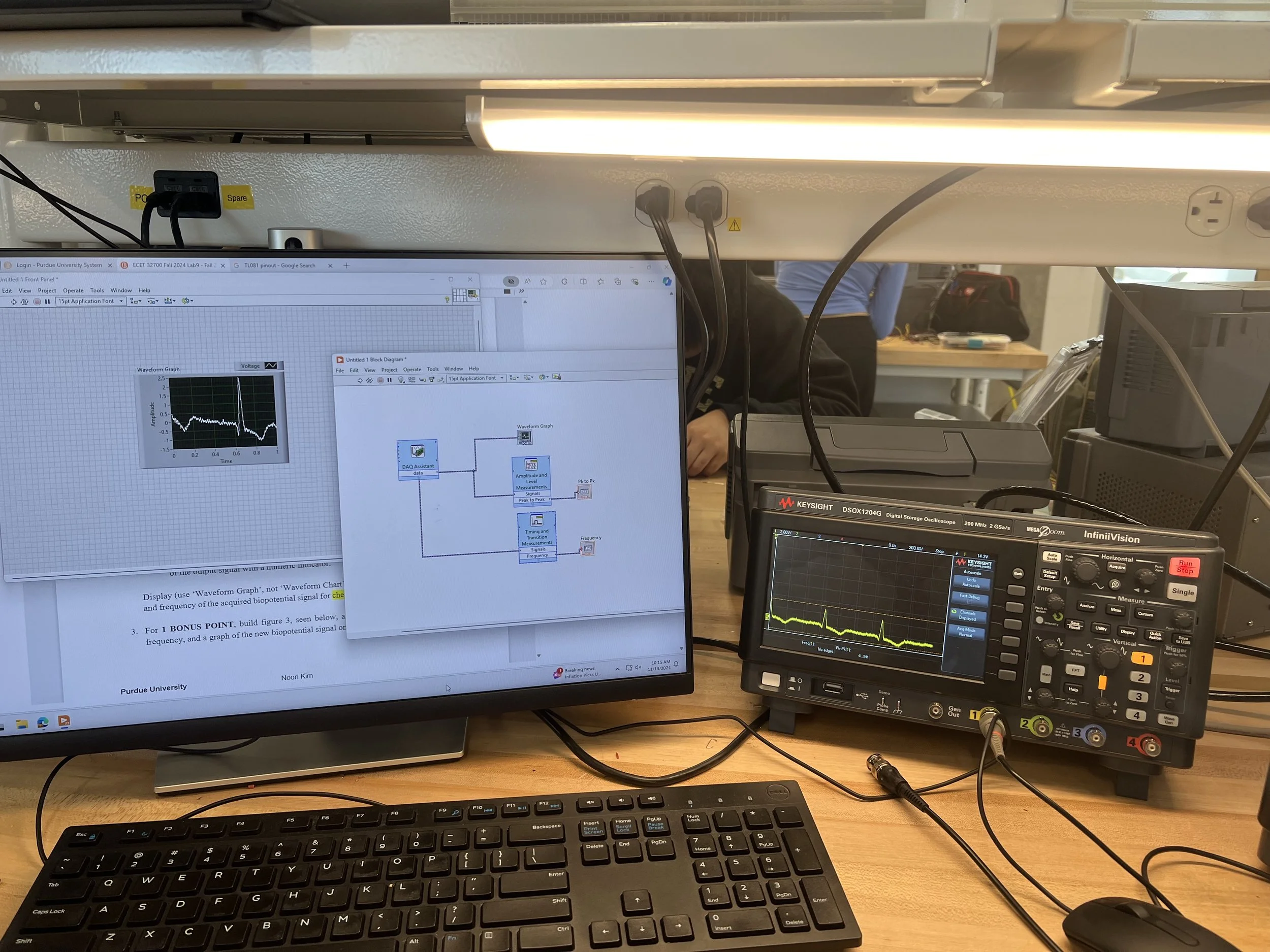Heartbeat Measurement Device
A biomedical project to design and test a biopotential amplifier capable of measuring human heartbeat signals, with real-time visualization through LabVIEW.
Circuit Design, Testing & Data Acquisition & LabVIEW Integration
As part of my Instrumentation and Data Acquisition course (ECET 32700), I designed and tested a biopotential amplifier to measure human heartbeat signals. The project involved building an analog circuit with op-amps, filters, and amplification stages, then integrating it with a NI USB-6008 DAQ and LabVIEW for real-time signal acquisition and visualization. This work strengthened my skills in biomedical instrumentation, noise filtering, and hardware–software integration
Problem
Biological signals like heart activity are weak (1–5 mV) and noisy, requiring careful amplification and filtering to produce useful data. The challenge was to design a biomedical circuit that could reliably capture heart signals, reject environmental noise, and display the data in a user-friendly interface
Process
I designed a biopotential amplifier consisting of:
An instrumentation amplifier to boost the weak ECG signal.
A band-pass filter (0.05–100 Hz) to isolate the heart’s electrical activity.
A non-inverting amplifier stage to adjust overall gain.
Electrodes were placed on the chest and leg to acquire raw heart signals. Using an oscilloscope, I tuned the gain to ensure the output stayed within the 1–5 V range while minimizing distortion.
Next, I built a LabVIEW VI for real-time monitoring. This included waveform display, peak-to-peak voltage measurement, and frequency detection using DAQ Assist with the NI USB-6008 device.
Prototype
Hardware: Amplifier circuit built on breadboard with TL081 op-amps, resistors, capacitors, and electrodes.
Data Acquisition: USB-6008 DAQ connected to LabVIEW.
Software: Custom LabVIEW VI with real-time waveform graph, numeric frequency indicator, and amplitude measurement.
Optional Bonus Build: Right-leg driven circuit to reduce common-mode noise and improve signal clarity
Results
The system successfully measured and displayed human heartbeat signals with clear peak-to-peak voltage readings and frequency detection. The LabVIEW interface provided real-time ECG visualization, enabling users to view electrical heart activity live. With the right-leg driven circuit, the signal-to-noise ratio improved, yielding more stable results.
Impact & Takeaways
This project highlighted how engineering design can be applied to human-centered biomedical challenges. By integrating circuit design, data acquisition, and software visualization, I gained experience in bridging hardware and software for medical applications. The project reinforced skills in analog filtering, LabVIEW integration, and biomedical instrumentation, laying a foundation for future work in medical device design.


